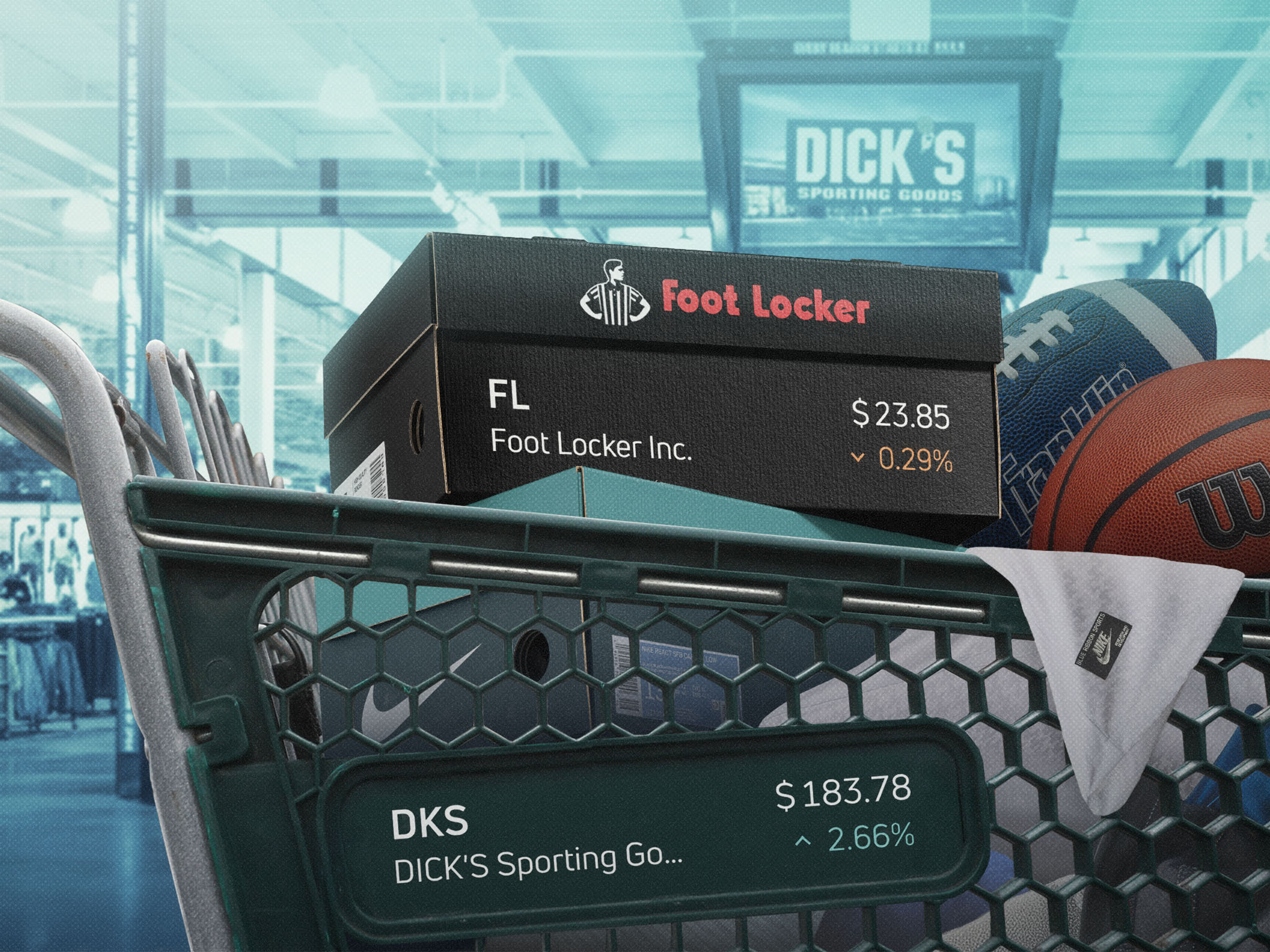The 1990s were halcyon days for sporting goods retailers. New York City, for example, sported a plethora of Sports Authority, Modell’s, Foot Locker (NYSE: FL) and Athlete’s Foot shops.
When I wanted the same pair of Nike (NYSE: NKE) shoes that John McEnroe wore on the senior tennis tour, I knew that they’d eventually go on sale at one of those outlets.
But times have changed. Shoppers have turned to the Internet for their sporting goods purchases, leading to the closure of many brick-and-mortar stores. Sports Authority is toast. Dick’s Sporting Goods (NYSE: DKS) and Foot Locker are the only ones left with a substantial offline presence. Dick’s has more than 850 stores in North America, and Foot Locker has about 2,400 around the world.
The massive shrinkage doesn’t seem to make sense. You might think that sporting goods are something you want to try on or out before buying them. But the industry’s consolidation continues apace.
Dick’s, the US’ largest sporting goods retailer, has just agreed to buy Footlocker, which focuses on sneakers, for $2.4 billion. Foot Locker comprises mostly smaller, mall-based locations, while Dick’s has big-box stores in the suburbs.
Tariff Damage
Both companies have suffered from US tariffs, which have pushed their prices higher, denting customer demand. About 97% of the clothes and shoes purchased in the US are imported, according to the American Apparel & Footwear Association.
Dick’s stock slid 8.4% year-to-date through Wednesday, the day before the merger was announced, while Foot Locker lost 41%. Dick’s shares lost 14% Thursday, while Foot Locker soared 85%.
Dick’s has prospered over the long-term, with the stock jumping 613% over the past five years, benefiting from its size and the positive in-store experience it has offered customers. Foot Locker has lost 50% during that period. It suffered particularly from Nike’s decision, since reversed, to focus on direct-to-consumer sales, cutting out retailers like Foot Locker.
Analysts offered mixed views of the combination.
“The key question that the market will contend with is whether the risk of DKS buying a struggling retailer is more than compensated by the accretion and synergies,” Michael Lasser, an analyst at UBS, wrote in a commentary cited by Barron’s. “Time will tell.”
Positives of merger
On the plus side, the combination would give Dick’s greater leverage in dealing with its vendors, such as Nike, said Jefferies analyst Jonathan Matuszewski, as cited by Women’s Wear Daily. Nike represents 25% of costs of goods sold for Dick’s, and for Foot Locker it’s 59%.
“The larger entity could also realize indirect procurement savings, improved ad and media buying terms, and shared services efficiencies,” he said. With the acquisition, Dick’s would increase its sporting-goods market share to 11% from 7.7% now.
On the minus side, Dick’s will now have to manage the streetwear and lifestyle fashion brands carried by Foot Locker and go up against faster-moving shoe retailers, said TD Cowen analyst John Kernan, as cited by Bloomberg. He termed the deal a “strategic mistake” for Dick’s. “There are countless examples of M&A destroying billions of dollars in value since we have covered the sector,” he said.
So it’s a tough call as to whether bigger is better for Dick’s.




Comments